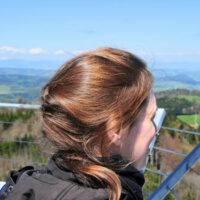Safety in road tunnels in Switzerland
-
Another thread on this forum was dealing with the things one should do and should not do while traveling in Switzerland, including etiquette. This thread was branching off in many directions and so I decided to start another thread tied to safety while driving an automobile in Switzerland. There is already a page on this forum with all kinds of important advice, from things as simple as driving on the right side (perhaps a good reminder for those coming from the UK and some former British colonies, plus Japan, Indonesia, and a few other places), shutting off one’s car motor, speed limits, respect for pedestrians, rules for rotaries (they are everywhere !) and the like. http://www.myswissalps.com/ca r/trafficregulations However I see nothing about safety when driving in tunnels.
There are approximately 1800 tunnels to be found all over Switzerland. Most people are familiar with the 57 km Gotthard Base Tunnel, and perhaps the 27 kilometre circumference of the LHC tunnel at CERN, in the Geneva area, with a large part under neighbouring France, but I am concerned with the roughly 470 road tunnels in Switzerland, which totaled 403 kilometres in length as of 2011. You can’t drive very far without going through a tunnel. The longest is the Gotthard at just under 17 kilometres in length. The longer the tunnel, the more you should be aware of safety rules.
I looked at the Touring Club Suisse website to see what they say about safety while driving in tunnels. It is in French, German, and Italian. No English. But here is a summary of the important points, plus a few I have added from personal experience.
If you are going through a long tunnel, like the Gotthard of the Grand St.Bernard, make sure your fuel needle is not near empty. Don’t wait to the last minute to do this ! As you approach, remove your sunglasses.
For all tunnels, respect all the signs, including illuminated ones. These are usually overhead and often tell you which lanes you are allowed to drive in as well as speed limits. Make sure your running lights are on. Keep a safe distance behind the vehicle in front of you. Do not exceed the maximum speed limit. Never make a 180 degree turn !
If your car breaks down, turn on your four-way emergency flashers. If you can, pull off into one of the safety areas (a “niche de secours“* in French), and if one of these is not there, park as close as you can to the right curb. Put on a safety vest (if you have one) and carefully leave your car, and walk to the nearest SOS phone, this being preferable to using your own mobile phone. In the French part of Switzerland, the nickname for a mobile phone is “natel” and in the German part it is “Handy“. Once you have called for help, walk carefully back to your vehicle, and wait for help to arrive. *TCS uses the expression “niche de secours” but I prefer “une aire de stationnement d’urgence”.
In the case of an accident, all the above applies as well, with the addition of trying to help anybody that has been injured.
If you see a traffic jam ahead (a “bouchon” in French) put on your four-way emergency flashers, and slow down as soon as you can and stop, keeping a good five metres behind the vehicle in front of you. All vehicles should stop as close to the curb (left or right if there are two lanes) to allow emergency vehicles to pass. Turn off your motor as soon as you are stopped, and stay in your vehicle. Listen to traffic information on the car radio (it won’t be in English).
If there is a vehicle somewhere ahead of you that is on fire, turn on your four-way flashers and stop as soon as you can, keeping your distance as much as possible. If you see a niche de secours that you can pull into, do so. Otherwise, park as close as you can to the curb. You should never attempt to do a 180 turn or put your vehicle in reverse. If it is your vehicle on fire try to roll to the end of the tunnel. If this is not possible, try to roll into a niche de secours. Shut off the motor and leave the key in the ignition. Immediately call for help, preferably from a SOS box. If the fire is just starting, try to extinguish it with a fire extinguisher (if you have one). If not, get out of the tunnel through one of the emergency exits (“sortie de secours” in French and “Notausgänge” in German) helping anybody that needs help.
NEVER FORGET: Fire and smoke can be deadly. Save your life rather than your car and personal effects. Obey all instructions from safety personnel and signs.
Accidents can happen in tunnels, often with heartbreaking results, even in Switzerland, which we like to think is so safe. Many of us remember the bus accident, back in March of 2012, in a tunnel on the A9 near Sierre (Valais) when 28 people, including 22 schoolchildren, mostly Belgian, perished when the bus they were traveling in crashed into the far wall of an emergency pull-off area.
Pour ceux qui peuvent lire le français, voici le lien TCS: Conduire dans un tunnel
Wenn Sie Deutsch lesen können, hier ist der TCS-Link:Fahren im Tunnel
It’s also available in Italian ! Guidare in Galleria
- The thread ‘Safety in road tunnels in Switzerland’ is closed to new replies.



